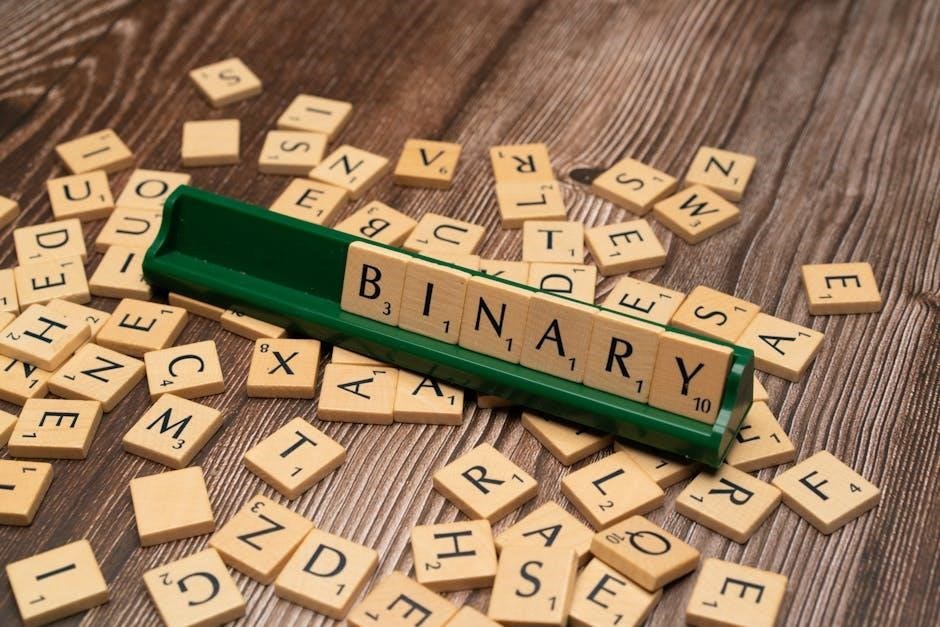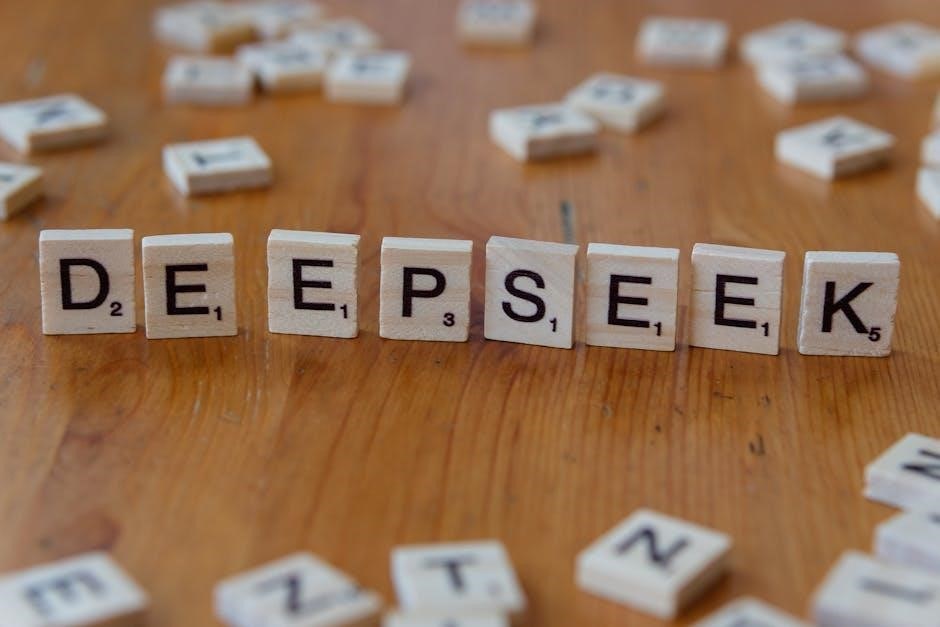Gestalt Language Processing (GLP) is a natural language development approach where children learn through memorized chunks, progressing to individual words, emphasizing holistic language acquisition patterns.
1.1 Definition and Overview
Gestalt Language Processing (GLP) is a language development approach where children learn by absorbing and replicating chunks of language, such as phrases or sentences, rather than individual words. These chunks, known as gestalts, are often derived from familiar sources like songs, TV shows, or conversations. GLP is a natural and valid language acquisition style, particularly common in neurodiverse populations, including autistic children.

Initially, children using GLP may exhibit echolalia, repeating phrases without immediate comprehension. Over time, they begin to break down these gestalts into smaller units, gradually developing the ability to combine words creatively. This process mirrors natural language acquisition patterns, emphasizing holistic learning rather than piecemeal construction of sentences.
1.2 Key Characteristics of Gestalt Language Processors
Children who use Gestalt Language Processing (GLP) exhibit distinct characteristics, including the use of echolalia and delayed echolalia. They often repeat phrases or sentences in their entirety, maintaining the original intonation and structure. These repetitions, or gestalts, are memorized chunks of language learned from their environment, such as songs, movies, or conversations. GLP learners thrive on holistic language acquisition, processing information as complete units rather than breaking it down into individual words or sounds. They may initially struggle with deconstructing these gestalts but gradually learn to mitigate and recombine them into novel utterances. This approach contrasts with analytic processing, where language is built from smaller components like words or sounds. GLP is a natural and valid language learning style, particularly common among neurodiverse individuals.
The Stages of Gestalt Language Development
Gestalt language development progresses through predictable stages, beginning with echolalia and scripting, followed by mitigation, where children break down and recombine language chunks into meaningful communication.
2.1 Stage 1: Scripting and Echolalia
Stage 1 of Gestalt Language Processing is characterized by scripting and echolalia. Children begin by repeating entire phrases or sentences they’ve heard, often from media, without altering them. This stage lays the foundation for future language development, as these memorized chunks serve as building blocks. Echolalia, both immediate and delayed, is a natural part of this process, allowing children to internalize language patterns and intonation. Scripting involves using these phrases in specific contexts, which may not always match the current situation. This stage is crucial for developing an initial repertoire of language that will later be broken down and recombined in more flexible ways. It’s important to recognize and support this foundational step in the child’s communication journey. Parents and therapists should acknowledge and encourage these early attempts at language use, understanding their role in the child’s overall developmental progression.
2.2 Stage 2: Mitigation and Breaking Down Gestalts

Stage 2 of Gestalt Language Processing involves the mitigation of rigid language use, where children begin to break down memorized gestalts into smaller, more flexible components. This stage marks a shift from echoing full phrases to using parts of them in new contexts. Children start to mix and match chunks, gradually moving toward single words and recombining them to form original sentences. This process is supported by child-led communication, where therapists and caregivers model phrases that can be easily adapted, such as “Let’s go __” or “It’s time to __.” Mitigation allows for greater creativity and functionality in communication, bridging the gap between scripted language and independent expression. Understanding this stage is crucial for tailoring interventions that align with the child’s natural progression toward more flexible language use.

Gestalt vs. Analytic Language Processing
Gestalt processing focuses on learning language in chunks, while analytic processing emphasizes individual words. This section compares these two styles, highlighting their differences in language acquisition and use.
3.1 Understanding Analytic Language Processing
Analytic Language Processing (ALP) involves breaking down language into smaller components, such as individual words, sounds, and grammatical rules, to construct meaning. This approach contrasts with Gestalt Language Processing, as it focuses on sequential, rule-based learning rather than holistic chunks. Children who use ALP often begin by learning single words and gradually combine them into sentences, following predictable linguistic structures.
In ALP, the emphasis is on understanding the building blocks of language, such as phonetics, syntax, and semantics, to create coherent communication. This method is often more aligned with traditional language teaching strategies, which prioritize explicit instruction and step-by-step skill development. While Gestalt processors rely on memorized phrases, analytic processors focus on the systematic assembly of language elements.
3.2 Comparing Gestalt and Analytic Processing Styles
Gestalt and Analytic Language Processing represent two distinct approaches to language acquisition. Gestalt Processing begins with whole chunks of language, such as phrases or sentences, which are later broken down into smaller units. This method emphasizes natural, holistic learning, often mirroring how children pick up language through immersion and repetition. In contrast, Analytic Processing focuses on individual components, like words and rules, which are systematically combined to form meaningful communication. While Gestalt processors may initially rely on memorized phrases, Analytic processors build language from the ground up, prioritizing structure and logic. Understanding these differences is crucial for tailoring educational and therapeutic strategies to meet individual needs.
Supporting Gestalt Language Processors
Supporting Gestalt Language Processors involves child-led communication, modeling phrases, and leveraging their unique interests to foster natural language development in a supportive environment, aiding their communication growth.
4.1 Strategies for Speech Therapists and Parents
Supporting Gestalt Language Processors requires tailored strategies that align with their unique learning style. Speech therapists and parents should focus on child-led communication, allowing the child to take the lead in interactions. Modeling phrases that can be easily recombined, such as “Let’s go __” or “It’s time to __,” encourages flexible language use. Incorporating the child’s interests and passions into therapy sessions fosters engagement and motivation. Parents and therapists should also create a safe space for communication, acknowledging and valuing all forms of expression, including echolalia. Building a partnership with families to understand commonly used gestalts and incorporating them into therapy can enhance progress. Additionally, using media tools like songs or videos to expose children to varied language chunks can support their development. These strategies promote a collaborative and nurturing environment for Gestalt Language Processors to thrive.
4.2 The Role of Child-Led Communication
Child-led communication is a cornerstone of supporting Gestalt Language Processors, emphasizing the importance of following the child’s lead during interactions. This approach allows the child to feel in control and comfortable, which is essential for fostering trust and reducing anxiety. By letting the child guide the conversation, parents and therapists can gain insights into their interests, needs, and unique language patterns. Child-led communication encourages the child to use their gestalts in meaningful contexts, helping them gradually break down and recombine language chunks. This method also promotes active participation and engagement, making learning more effective and enjoyable. It is a powerful way to honor the child’s autonomy while supporting their communication development in a natural, intuitive manner.

Natural Language Acquisition and Gestalt Processing
Natural Language Acquisition (NLA) aligns with Gestalt Language Processing, emphasizing predictable stages of language development. Both approaches prioritize child-centered, natural communication methods, fostering progression from memorized chunks to original sentences.
5.1 The Six Stages of Natural Language Acquisition
Natural Language Acquisition (NLA) progresses through six predictable stages, closely aligning with Gestalt Language Processing. Stage 1 involves absorbing and memorizing language chunks. Stage 2 focuses on using these chunks in context, often through echolalia. In Stage 3, children begin to break down chunks into smaller parts, exploring word boundaries. Stage 4 introduces creative combinations of these smaller units. Stage 5 sees the refinement of grammar and syntax, while Stage 6 culminates in spontaneous, original communication. These stages mirror Gestalt principles, emphasizing holistic learning and gradual decomposition of language. NLA provides a framework for understanding and supporting children as they progress from memorized phrases to independent language use.
5.2 Aligning GLP with NLA Principles
Aligning Gestalt Language Processing (GLP) with Natural Language Acquisition (NLA) principles involves embracing a child-led, holistic approach to communication. Both frameworks emphasize the importance of following the child’s lead and valuing their unique communication attempts. GLP’s focus on memorized language chunks naturally aligns with NLA’s early stages, where children absorb and echo phrases. As children progress through NLA’s stages, GLP strategies support their gradual breakdown of gestalts into smaller units and creative recombinations. This alignment fosters a seamless transition from echolalia to spontaneous, meaningful communication. By integrating GLP and NLA principles, parents and therapists can create a supportive environment that honors the child’s natural learning process, ensuring their language development is both joyful and effective.
Resources and Communities for Gestalt Language Processing
Explore recommended readings, online communities, and support groups dedicated to Gestalt Language Processing. Join Facebook groups like Natural Language Acquisition Study Group, attend workshops, and engage with experts to enhance your understanding and support GLP learners effectively.
6.1 Recommended Reading and Research
For deeper insights into Gestalt Language Processing, explore resources like “The Six Stages of Natural Language Acquisition” by Dr. Mary Barbera, which provides a roadmap for supporting GLP learners. Sabrina O’Keefe’s work on DIRFloortime and Gestalt principles offers practical strategies for therapists and parents. Research by Koenig highlights the importance of understanding comprehension in GLP children, challenging traditional assessment methods. Additional guides, such as those from Sheffield Children’s NHS Foundation Trust, outline effective strategies for communication support. These materials emphasize child-led approaches, modeling phrases, and fostering natural language development. Engage with systematic reviews on GLP/NLA interventions to stay updated on evidence-based practices. These resources are essential for anyone seeking to support Gestalt language processors effectively.
6.2 Online Communities and Support Groups
Joining online communities and support groups is a valuable way to connect with others who understand Gestalt Language Processing. Facebook groups like Natural Language Acquisition Study Group and AAC and Gestalt Language Processing offer spaces for sharing experiences, strategies, and resources. These groups often host discussions on topics like child-led communication, echolalia, and scripting. Members exchange tips on implementing GLP-friendly strategies and recommend helpful materials. Additionally, forums like Speech Therapy Support provide access to professional advice and emotional support. These communities are instrumental in fostering collaboration and innovation, ensuring families and professionals stay updated on the latest research and practices in GLP. Engaging with these networks can be transformative for those supporting Gestalt language processors.



